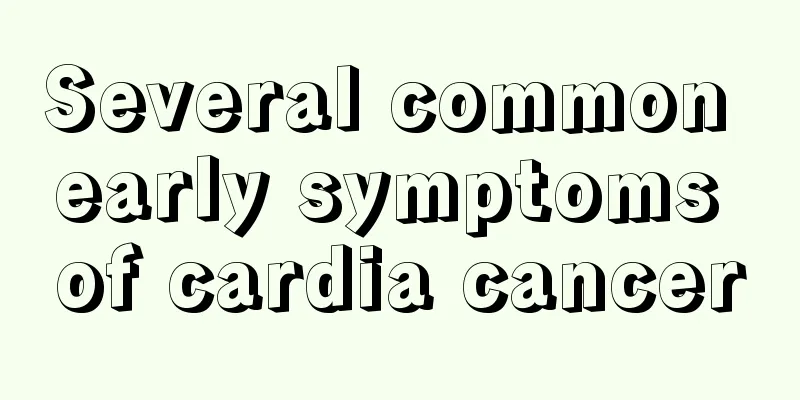Can ovarian tumors be inherited?

|
Ovarian tumors may be related to genetics; environmental factors such as high-cholesterol diet and industrial pollution; endocrine factors and the relationship between ovulation and carcinogenesis; endogenous stimuli and the physiological position of the ovary; gonadotropin stimulation; immune dysfunction; radiation, etc., which cause ovarian epithelial tumors, ovarian germ cell tumors, ovarian sex cord stromal tumors, and ovarian metastatic tumors. Detailed analysis of the causes of growth hormone deficiency: The causes of ovarian tumors of many tissue morphologies have yet to be elucidated, and the following information can be used for further research. 1. Genetic and family factors Possible genetic factors of human ovarian tumors. It is found that many people with primary tumors in other parts (especially breast cancer) are associated with ovarian cancer. Tumor occurrence has congenital factors, which may be due to immune dysfunction. Several families have been reported to have a tendency to develop mesothelial ovarian tumors, breast cancer or ovarian cancer. 20-25% of patients with ovarian malignancies have a family history, and 5-14% of women with Peutz-Jeghers syndrome develop ovarian tumors. Especially epithelial cancers, some syndromes have been confirmed to be related to ovarian cancer, such as breast-ovarian cancer syndrome, familial ovarian cancer in specific parts and Lynch syndrome type II, basal cell blastoma syndrome, Peutz-Jegher syndrome, and mutations in BRCA1 and BRCA2 genes. 2. Nutrition and socioeconomic status Improved nutrition and socioeconomic conditions are associated with an increased incidence of ovarian cancer. The incidence of ovarian cancer in the first generation of Japanese immigrants to the United States is higher than that of women who have lived in Japan for generations. 3. Environmental factors The high incidence of ovarian cancer in industrially developed countries may be related to high-cholesterol diet and industrial pollution. 4. Endocrine factors The average number of pregnancies in ovarian cancer patients is low, and the incidence is higher in non-pregnant women, which shows that pregnancy may protect women from or reduce the incidence of ovarian cancer, because stopping ovulation during pregnancy can reduce ovarian epithelial damage. Ovarian cancer often occurs in women with few pregnancies and non-pregnant women, which also shows this point. Early childbearing, early menopause and the use of oral contraceptives are protective factors for ovarian cancer. The chance of breast cancer and endometrial cancer combined with functional ovarian cancer is twice that of ordinary women, which shows that all three are hormone-dependent tumors. 5. Relationship between ovulation and cancer Malnutrition can reduce the number of ovulations. In fact, ovulation is an important carcinogenic factor. Periodic ovulation repeatedly causes damage and stimulation to the ovarian mesothelium, and also lacks a persistent physiological recovery period. This can explain why the ovarian mesothelium has a tendency to malignant transformation compared to the peritoneum. Ovulation also produces defects and unevenness on the ovarian surface, which easily forms ovarian mesothelial closed cysts, allowing carcinogenic factors to accumulate and stay there for a long time and attach to the mesothelium. 6. Endogenous stimulants and the physiological position of the ovaries Other factors that may cause ovarian tumors may also be endogenous stimuli, such as endometrium, ovarian secretions and menstruation. The ovaries are often located at the lowest position in the pelvic cavity, and the intraperitoneal fluid (which may contain chemical or viral carcinogens) often stays there and soaks the ovarian mesothelium, which can explain the tendency of ovarian mesothelium to become malignant and the reason why ovarian tumors occur more frequently on both sides. Ovarian mesothelioma has an important close relationship with frequent complications of uterine body and ovarian malignant tumors. It can be explained by "regional carcinogenesis". 7. Gonadotropin stimulation The highest incidence of ovarian tumors is related to the increase of gonadotropin in women before and after menopause. This state can last for at least 25 years after menopause. The continuous stimulation of gonadotropin by the ovarian stroma promotes the proliferation and activation of the stroma, and the persistent secretion of estrogen. The proliferation of ovarian fibers caused by gonadotropin stimulation and the proliferation of ovarian epithelium caused by secondary estrogen stimulation combine to form fibroadenomas. 8. Immune dysfunction The incidence of malignant tumors in patients with congenital immunodeficiency is 10,000 times higher than in controls. The incidence of ovarian cancer is significantly increased in women who are immunosuppressed due to tissue transplantation or chemotherapy for other tumors. Due to the immunodeficiency associated with the aging process, the number of women who are more than 5 years postmenopausal has increased. |
<<: Can ovarian tumors be inherited?
>>: Will ovarian tumors be passed on to children?
Recommend
How to preserve mangoes for a longer time?
Although mangoes are nutritious and delicious, ma...
Is breast cancer contagious?
Breast cancer and breast tumors are not transmitt...
Tomato juice trick to remove clothes
Tomatoes are very common vegetables in our lives ...
Orthodontic surgery
Generally, the most common oral deformity is toot...
How effective is Yupingfeng in treating urticaria
Urticaria, commonly known as wheals, is a common ...
Skin allergy to high temperature
The weather is hot and stuffy in summer, and many...
How to determine whether you have liver cancer? Teach you how to correctly identify liver cancer
Statistics from the World Health Organization sho...
Tumor necrosis factor high
Tumor necrosis factor is a relatively important s...
What are the folk remedies for treating ichthyosis
To treat ichthyosis, some diet and conditioning m...
The best treatment for colon tumors
What is the best treatment for colon tumors? Ther...
Microwave dough fermentation
The function of a microwave oven can be said to b...
Why can't tinnitus patients get angry?
Patients of different age groups have different r...
How much emergency contraceptive pills should be taken
Emergency contraceptive pills are a common method...
Does jogging consume a lot of energy?
Fitness has become a favorite among urban people ...
Will oily skin develop spots?
Oily skin is not just for women, some men also ha...









